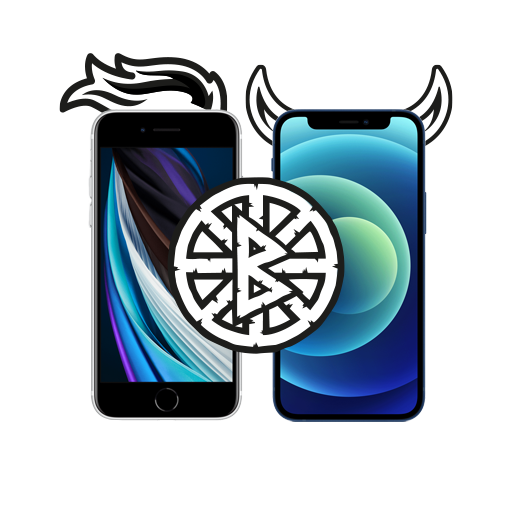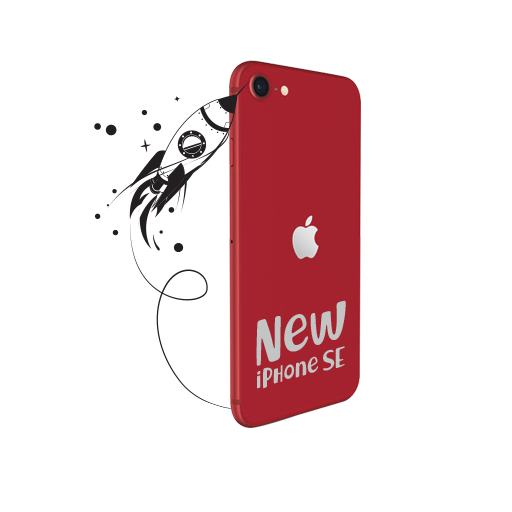It’s about beauty, it’s about budget, and it’s about time. It’s Apple iPhone SE vs Google Pixel 4a.
Ever since the Google Pixel was launched way back in 2016, it took the skirmishes between iPhone and Android to an all-new level. What Google could not achieve with their previous smartphones, they are trying to do now – regain their place in the premium budget section by taking the wraps off their latest Pixel 4a! This puts the handset as a head on competitor to the much loved and appreciated Apple iPhone SE (2020).
Both the phones are from credible manufacturers. Apple and Google have put in a lot of research, features, and the best of processors they could install on a budget phone. They’ve also gone so far as to put in top quality finishing touches that the customers and loyalists of both the brands expect from them. So which of these handsets should you go for?
Here’s a comparative glance at both the devices:
Apple iPhone SE 2020
Price: ₹42,500
Dimensions in inches: 5.45 x 2.65 x 0.29
Display: 4.7” Retina HD
RAM: 3GB
Processor: A13 Bionic
Storage: 64GB, 128GB & 256GB
Weight: 147.98 grams
Cameras: 12MP wide angle (Rear) 7MP (Front)
Biometrics: Home Button with TouchID
Battery: Size not specified, upto 13 hours of video playback
Special Features: Dual SIM, Qi Wireless Charging, Water and dust resistant.
Google Pixel 4a
Price: TBA (est ₹30000)
Dimensions in inches: 5.66 x 2.73 x 0.32
Display: 5.8” OLED Display
RAM: 6GB
Procssor: Qualcomm Snapdragon 730G
Storage: 128GB
Weight: 142.88 grams
Cameras: 12.2MP wide angle (Rear) 8MP (Front)
Biometrics: Rear-mounted fingerprint sensor
Battery: 3,140 mAh
Special Features: Google Maps AR, Always on display
Apple iPhone SE vs. Google Pixel 4a: The Comparison
The iPhone SE gets 3GB of RAM, which is objectively low compared to mid-range Android devices. But who cares, since iOS does not require a lot of RAM to run smoothly. It does, however, get one of the fastest smartphone processors currently in the market: The A13 Bionic. Goodbye, hungover devices. Hello, AR, smooth gaming, and multi-tasking!
Google Pixel 4a packs the Qualcomm Snapdragon 730G, which is a gaming optimized variant of the mid-range Snapdragon 730. It is also equipped with 6GB RAM. Now, although the Pixel 4a may have more memory on paper, it’s likely that it won’t benchmark or perform as fast as the iPhone SE in real world applications. Apple iPhone’s have a reputation for delivering more performance with less RAM.
On the storage front, the iPhone gives a choice of 3 storage options, 64GB, 128GB, and 256GB. The Pixel, on the other hand, will be available in only one 128GB storage option.
The iPhone SE has a single 12 megapixel rear camera setup, which, on paper, may seem mediocre but it can deliver amazing photos thanks to Apple’s R&D. The Pixel, too, has a single rear camera setup but it sports a 12.2 megapixel unit. Google says that it has added computer assisted photography, but the real comparison can only be done when we see both the devices taking photographs in real life.
The iPhone SE has a lightning port but does not have a headphone jack. On the other hand, the Pixel 4a has a USB type C port as well as a headphone jack.
Apple has thrown in Qi Wireless charging capabilities that Google misses. Both devices have similar battery capacities, and will support 18W fast-charging with the appropriate hardware. Apple has also given water resistant rating IP67 to the iPhone SE whereas Google’s device has never had an IP rating.
Conclusion
Google has taken some cost-saving measures with its Pixel 4a. However, it does not support wireless charging, isn’t water resistant, and its construction isn’t as ‘Premium’ as the iPhone SE. The iPhone actually packs flagship-level capabilities into a sub ₹50000 price point that includes the A13 Bionic, which runs circles around the Snapdragon 730G – and pretty much any android processor.
The Google Pixel 4a is the cheaper device here, but it still delivers a range of features. The iPhone SE, on the other hand, is more expensive but has the superlative processor among the two. There’s no denying that the SE would be much smoother to use than the 4a.
In this battle, both the contenders have a lot going for them and a lot going against them. For instance, the Pixel is the cheaper alternative but lacks the premium feel that Apple has to offer. The iPhone SE’s screen looks rather dated due to its thick bezels and pales in front of the Pixel, which has neatly integrated the bezel-less look in the 4a’s screen. Both the devices have similar front and rear cameras and both rely on computer assisted photography to make the most out of their single lens front and rear cameras.
Thus, the battle finally boils down to the operating system of your choice. And if we are making the choice, then you know it’s going to be iOS all the way. After all, we are diehard Apple fans, right?



